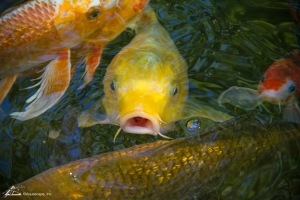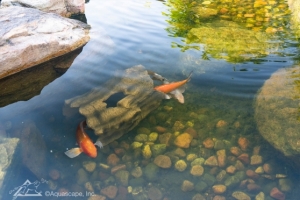Meet the Fish: A Guide to Choosing the Perfect Pond Fish for Your Cincinnati Pond
Adding fish to your Cincinnati pond can transform it into a vibrant and lively aquatic ecosystem. Not only do pond fish enhance the aesthetics of your outdoor space, but they also contribute to the overall balance and health of the pond. However, choosing the right fish for your Cincinnati pond requires careful consideration of factors such as climate, pond size, and water quality. In this guide, we’ll introduce you to some fantastic pond fish options that are well-suited to the Cincinnati region, ensuring a thriving and picturesque pond.
Koi: The Majestic Beauties
Koi fish are perhaps the most popular choice for pond enthusiasts in Cincinnati. Known for their stunning colors and graceful movements, koi add a touch of elegance to any pond. These hardy fish can adapt well to different water conditions and are well-suited for Cincinnati’s climate. With proper care, koi can grow to impressive sizes, becoming the focal point of your pond.
Goldfish: The Classic Companions
Goldfish are another classic choice for Cincinnati ponds. They come in various colors and shapes, making them a versatile and visually appealing addition. Goldfish are known for their adaptability and ability to thrive in a variety of pond environments. With their charming presence and ease of care, goldfish are ideal for both beginner and experienced pond keepers in Cincinnati.
Sunfish: Native Delights
For those looking to create a more natural ecosystem, native sunfish can be an excellent choice. Bluegill and pumpkinseed sunfish are native to the Cincinnati region and can integrate seamlessly into local pond environments. These fish are not only beautiful but also play a vital role in maintaining the ecological balance of your pond by controlling insect populations.
Catfish: Bottom-Dwelling Helpers
Channel catfish or bullheads can be valuable additions to your pond, especially if you want fish that help keep the bottom clean. Catfish are bottom-dwelling scavengers, feeding on organic matter and algae. This can contribute to maintaining water clarity and quality in your Cincinnati pond. Ensure proper aeration and water circulation to support their well-being.
Weather Loaches: Unique Pond Residents
Weather loaches, also known as pond loaches, are unique and interesting additions to your Cincinnati pond. These fish have a distinctive appearance and are known for their playful behavior. They thrive in well-oxygenated water and can be a great addition to your pond community. However, ensure that your pond has adequate hiding spots as these loaches enjoy burrowing in substrate.
Choosing the perfect pond fish for your Cincinnati pond involves thoughtful consideration of various factors, including climate, pond size, and water conditions. Whether you opt for the majestic koi, the classic goldfish, native sunfish, helpful catfish, or unique weather loaches, each fish brings its own charm to your outdoor oasis. By selecting the right combination of fish, you can create a balanced and thriving pond ecosystem that enhances the beauty of your Cincinnati backyard. Take the time to research and plan, and soon you’ll be enjoying the soothing presence of your pond fish as they gracefully swim through the crystal-clear waters of your pond.
Check out our store for all your water gardening needs! Aquascape products are Aquascape Inc. Certified.
Thanks for reading at Meyer Aquascapes! We hope you’ve enjoyed our post on garden pond design. Please leave a comment below if you liked it or have any questions. We’d love to hear from you! Thanks for stopping by!




